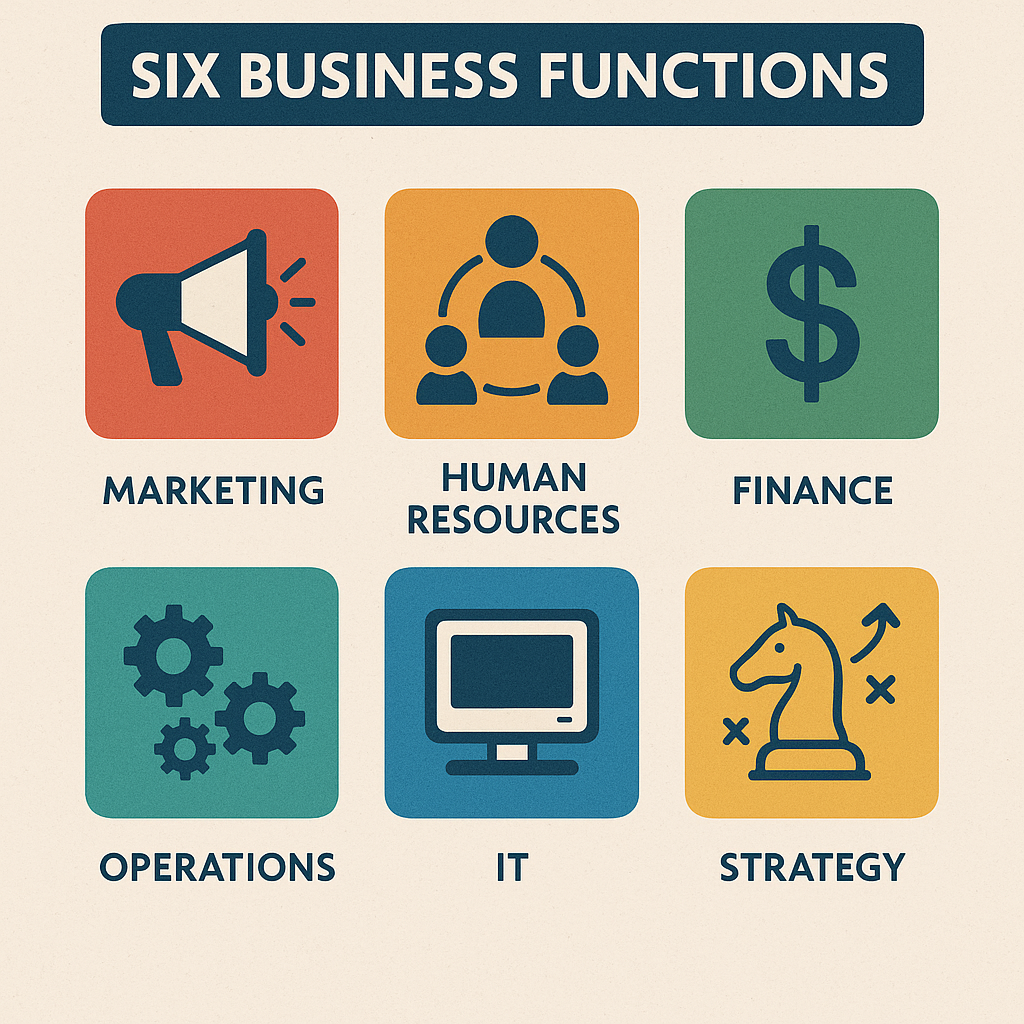Every organization begins with a purpose—whether it’s crafting custom homes, manufacturing airplane parts, or tutoring college students. To deliver value, companies rely on core activities that keep operations running. These processes form the backbone of how businesses operate, from startups to global corporations.
This guide simplifies how successful organizations structure their workflows. You’ll learn how core priorities (like product creation) connect to behind-the-scenes roles such as finance or HR. We’ll use relatable examples to show how these pieces fit together, whether you’re launching a venture or analyzing workplace efficiency.
No prior knowledge required. Complex ideas are broken into bite-sized explanations, focusing on practical applications. By the end, you’ll identify how different departments collaborate to achieve goals—and how to apply these insights to your own projects.
Key Takeaways
- Core activities define a company’s primary purpose, like producing goods or delivering services
- Supporting roles (e.g., accounting, HR) enable smooth day-to-day operations
- Structure varies by size: startups often combine roles, while corporations specialize
- Alignment between departments drives efficiency and customer satisfaction
- Clear workflows help teams avoid overlaps and communication gaps
Introduction to Business Functions
Imagine a bustling city where each district specializes in a vital service—this mirrors how companies organize essential tasks. These functional areas act like specialized neighborhoods, each handling specific operations while contributing to the whole.
Defining the Primary and Core Functions
Every company has a central purpose—its primary function. This could be designing software, baking artisanal bread, or offering consulting services. Like a home’s kitchen serves as its heart, this core activity drives daily operations.
Surrounding this central focus are five universal support systems: human resources, finance, marketing, sales, and strategy. These core functions work like plumbing and electrical systems in a house—invisible yet critical for smooth performance.
“Specialization isn’t just efficient—it’s survival. Teams focusing on their strengths outperform generalists every time.”
The Importance of Functional Areas in Business Success
Separating tasks into distinct areas lets experts shine. Accountants manage budgets while marketers craft campaigns. This division reduces errors and accelerates growth.
When departments collaborate like orchestra sections, companies achieve harmony. Sales teams convert leads generated by marketing. HR nurtures talent that drives innovation. This synergy creates success stories customers remember.
What are the six business functions?
Picture a football team where every player masters a specific position. The quarterback calls plays, linemen protect, and receivers score touchdowns. Similarly, organizations rely on specialized roles working in sync to achieve victories. Let’s explore the six critical components that keep companies competitive.
Overview of Essential Activities
Every successful enterprise operates through interconnected functional areas. Strategy charts the course, much like a coach’s game plan. Marketing identifies customer needs, while finance manages resources like a salary cap. Human resources recruits top talent, technology provides cutting-edge tools, and operations executes daily plays. For registered nurses exploring independent ventures, our guide on starting an IV hydration business as an RN outlines the essential steps and compliance factors to consider.
| Core Drivers | Support Systems |
|---|---|
| Marketing & Sales | Human Resources |
| Operations | Finance Management |
| Strategy | Technology/Equipment |
Connecting the Dots: Roles in Harmony
Imagine a bakery where ovens (operations) bake goods, while cashiers (sales) handle transactions. Behind the scenes, accountants track profits, and HR hires skilled bakers. This collaboration mirrors how support roles empower core activities.
“Great businesses work like Swiss watches—each gear must mesh perfectly with the others.”
When marketing campaigns drive traffic, sales teams convert leads. Simultaneously, tech tools streamline workflows, letting teams focus on innovation. This synergy transforms individual efforts into organizational success.
Exploring Core and Support Functional Areas
Think of a restaurant where chefs create dishes (core) while dishwashers and hosts (support) keep things running. This balance between revenue-generating activities and behind-the-scenes work defines modern organizational structures. Let’s examine how these functional areas collaborate to drive results.
Revenue Engines: Marketing, Sales, and Strategy
Marketing acts as a megaphone, broadcasting your value to potential customers. It builds relationships before the first conversation happens. Sales teams then personalize that message, turning interest into transactions through tailored solutions.
Strategy operates like a GPS—constantly analyzing market conditions and adjusting routes. It identifies growth opportunities while avoiding dead ends, ensuring resources fuel the most promising initiatives.
Operational Backbone: HR, Finance, and Logistics
Human resources recruits talent that sparks innovation, while finance teams monitor cash flow like air traffic controllers. Operations ensures products reach customers seamlessly—whether through efficient manufacturing or timely delivery services.
“Support teams are organizational glue—they fix leaks before the ship sinks.”
| Growth Drivers | Stability Factors |
|---|---|
| Customer acquisition | Payroll management |
| Market expansion | Equipment maintenance |
| Product innovation | Regulatory compliance |
This interplay between front-line and support roles creates businesses that adapt and thrive. When marketing campaigns align with production capacity, and HR policies empower sales teams, companies achieve sustainable success.
Diving into Human Resources and Finance Management
Consider a theater production where casting directors and stage managers work behind the scenes to ensure the show’s success. Similarly, human resources and finance teams operate backstage in organizations—shaping culture and safeguarding stability while other departments take center stage.
Building Teams That Thrive
Recruiting isn’t just filling seats—it’s matchmaking. Great HR managers identify candidates whose values align with company goals. They ask: “Will this person solve problems we haven’t even encountered yet?”
Ongoing training turns raw talent into specialists. Workshops on new software or leadership development keep employees sharp. Recognition programs and flexible schedules often boost engagement more than paychecks alone.
Fueling Growth Through Financial Strategy
Cash flow acts like oxygen for organizations—without it, even brilliant ideas suffocate. Smart budgeting balances today’s bills with tomorrow’s ambitions. For example, setting aside 15% of profits for R&D while maintaining emergency reserves.
“Money talks, but wise finance management listens—to market trends, team needs, and customer demands.”
Investment strategies vary by industry. A tech startup might prioritize cloud infrastructure, while a manufacturer upgrades machinery. Both decisions require weighing risks against potential returns.
| HR Priorities | Finance Focuses |
|---|---|
| Skills gap analysis | Expense tracking |
| Culture building | Profit reinvestment |
| Conflict resolution | Credit management |
The Impact of Marketing and Sales on Business Growth
Think of a rock concert where the band energizes the crowd while roadies manage logistics. Marketing sparks excitement, while sales ensures seamless transactions. Together, they create experiences that drive revenue and build lasting connections.
Building Brand Awareness and Target Audience Engagement
Marketing acts as a megaphone for your brand. It answers three questions: Who are you? What value do you offer? Why should customers care? Effective strategies include:
- Social media campaigns mirroring audience values
- Educational content addressing pain points
- Local events creating hands-on experiences
Market research reveals hidden opportunities. A coffee shop might discover commuters want faster mobile ordering. Acting on this insight could capture morning rush traffic competitors miss.
“Great marketing doesn’t shout—it starts conversations that sales teams can finish.”
Sales Processes: Converting Prospects into Loyal Customers
Sales transforms interest into action through trust-building steps:
- Listening to specific needs
- Matching solutions to challenges
- Offering risk-reduced trials
Loyalty grows when teams exceed expectations. A software company might provide free training sessions post-purchase. This investment often leads to upgrades and referrals.
| Marketing Focus | Sales Priority |
|---|---|
| Brand storytelling | Personalized pitches |
| Market trend analysis | Objection handling |
| Lead generation | Relationship nurturing |
When marketing’s messaging aligns with sales’ personal touch, companies see consistent growth. This partnership turns first-time buyers into brand advocates who fuel sustainable success.
Strategic Planning and Its Role in Business Success
Imagine planning a cross-country road trip without maps or GPS. Strategic planning gives organizations that same clarity—charting routes to growth while dodging obstacles. It combines big-picture thinking with practical steps to turn visions into reality.
Developing Vision, Mission, and Competitive Strategies
A vision statement paints your ultimate destination. Are you revolutionizing an industry or perfecting local services? The mission statement becomes your daily compass, explaining how you’ll create value through products or community impact.
Competitive strategies identify your unique lane. Maybe you offer faster delivery than rivals or specialize in eco-friendly materials. These differentiators help customers choose you in crowded markets.
“A clear vision acts as organizational glue—it aligns teams during storms and sunshine.”
Utilizing SWOT Analysis and Market Positioning
SWOT analysis reveals hidden potholes and open highways. Strengths might include loyal clients, while supply chain delays emerge as weaknesses. Opportunities could involve new technologies, and threats might be shifting regulations.
| Internal Factors | External Factors |
|---|---|
| Skilled workforce | Emerging competitors |
| Budget constraints | Changing consumer trends |
Market positioning shapes how audiences perceive your brand. A coffee shop might emphasize artisanal blends over fast service, tailoring decor and promotions to match this identity.
Regular strategy reviews keep plans fresh. Quarterly check-ins let teams adjust goals based on performance data or industry shifts. This approach builds adaptable organizations ready for tomorrow’s challenges.
Leveraging Technology and Streamlining Operations
Imagine assembling a jigsaw puzzle where each piece boosts performance. Modern companies thrive by fitting tech solutions into daily workflows. Smart choices here slash wasted time and amplify results across teams.
Adopting the Right Tools and Software for Efficiency
Top performers use software like precision instruments. Project management platforms track deadlines, while AI analytics predict customer trends. Cloud-based systems let teams collaborate from anywhere, turning ideas into action faster.
Maintenance matters too. Regular updates keep tools running smoothly, preventing costly downtime. For example, automated inventory systems reorder supplies before stockouts occur.
Optimizing Daily Operations and Supply Chain Management
Streamlined processes work like well-oiled machines. Manufacturers use RFID tags to track shipments in real time. Retailers analyze sales data to optimize shelf layouts, reducing restocking trips by 30%.
Supply chains benefit from smart technology. Route-planning apps cut delivery fuel costs, while vendor portals sync orders automatically. These tweaks create ripple effects—lower expenses, happier clients, greener practices.
“Efficiency isn’t about speed—it’s about removing friction so teams can focus on what matters.”







